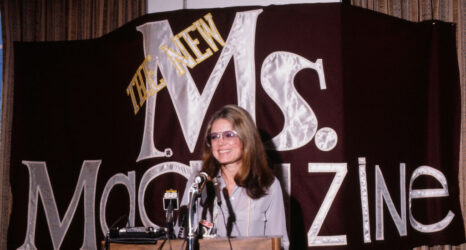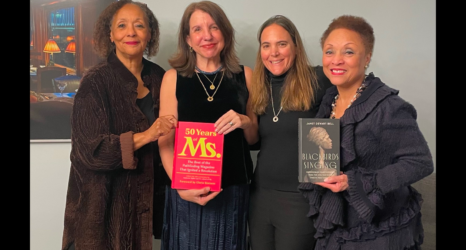I am sitting on the carpeted floor in our local Barnes & Noble and looking through Ivanka Trump’s new book, Women Who Work. (I can’t bring myself to buy it.) Trump tells us that her book is a “manual for architecting the life you want to live,” and she uses architectural metaphors throughout the book—urging women to “plot a plan for success” so that “your life’s blueprint reflects your foundational values.”
As an architect, I love the way architectural terms quietly sneak into everyday language. Perhaps because dwelling and shelter are among the most primal of human needs, buildings have come to symbolize all structures, both physical, mental and social. And I was troubled by Ivanka’s limited understanding of architecture and its complexities.
Basing her advice on her own experience “and from observing the women around me — my team, my friends, all the women I knew,” she concludes that “passion, combined with perseverance, is a great equalizer.” According to Ivanka, anyone can have the life they want if they follow her cheerleading advice. She demonstrates that a white, powerful and enormously wealthy woman can be as ignorant to her own privilege as any white man.
Most women, of course, live a very different life than members of the Trump family. Like Ivanka, I love my work. I have a small architectural firm, and from time to time I travel to give a lecture. But I suspect that Ivanka, unlike me, never worries that she will return to sink full of dishes and an overflowing laundry basket. Having grown up in a palace of plenty, she cannot imagine the struggles and juggles that most working people confront.
Architects have often fallen into the same trap that Ivanka does—generalizing their own experience as a guide to what others need or want. While the notion that all humans are equal is at the core of morality and humanism, this universalism can also blinds us to important cultural, racial, gender and class differences.
The image of a “universal man” has haunted our culture for a long time. Five hundred years ago Leonardo da Vinci created the Vitruvian Man to illustrate the divine beauty of the human body. Describing this man’s perfect proportions, Leonardo wrote that “the root of the penis is half the height of the man”—a clear sign that the female body, a pre-existing condition we are now told, was not being considered. More recently, the great architect Le Corbusier created the Modulor, an ergonomic diagram for architects and designers. But for Corbu in 1950, like Leonardo in 1490, the perfect human was a white, most likely Christian, man—approximately 1.75 meters high.
With their seductive beauty, these images of idealized bodies exclude the real diversity of humankind. The problem is that when we design, and teach and provide medical care for a typical, universal or generic person, we exclude and discriminate against all those who do not occupy the middle section of the bell curve.
A flurry of articles attempting to understand the 2016 election suggested that we have come to the end of liberal identity politics. Mark Lilla’s NYT piece claimed that the Clinton campaign failed to win the election because she focused too much of diversity, reaching out to women, Latinos, African Americans and LGBTQI folks—rather than focusing on the unifying aspect of American society. He calls for a liberalism that would “concentrate on widening its base by appealing to Americans as Americans and emphasizing the issues that affect a vast majority.” I fear that issues that affect “a vast majority” is a synonym for a white male majority.
Ivanka also seems to be writing for a fictional, privileged majority—unaware of the complex circumstances of women or other marginalized groups. She suggests that we all write a “personal brand statement” as if motivation and focus are the only thing holding women back. But, as architects know, when we design spaces for the “vast majority” we often create physical barriers that make these spaces inaccessible to some.
Ivanka would benefit from learning about equity, a concept that helps me avoid some of these mistakes. Equality and equity are often mistakenly seen as synonyms—but while equality strives to treat everyone as same, equity is a realization that to achieve true equality we need to consider our differences.
Here is a simple example: When we build an equal number of bathroom stalls for men and women, we unintentionally discriminate against women, who will have a much longer wait. Equity in design requires that we consider the particular needs of users and in public restrooms. This means giving women at least double the number of stalls.
Accommodating diverse user groups is not only a benevolent, charitable act that supports those with special needs—it often benefits the so-called “vast majority.” With life expectancy increasing, almost everyone will benefit at some point from ADA accessibility laws. You will be grateful for curb-cuts and ramps when pushing a double stroller, and for having space to turn your wheelchair after surgery or an injury. Unlike Leonardo and Corbu’s aspirational bodies, the Universal Design Guideline illustrates a range of body sizes and shapes for architects to consider. It celebrates the human body and its range of shapes and proportions.
Ivanka, from her privileged perch, is completely blind to the barriers that women face in the work world. Not only do women enter work with lower pay and less power, but then their achievements are judged on a negatively skewed scale. How else can we explain why a man who files multiple bankruptcies is hailed as a savvy businessman, while a female political leader who is paid to give a lecture is criticized as greedy? Or why a man is trusted, despite repeatedly lying, while a woman who testified honestly at a congressional hearing is perceived as untrustworthy?
The world is not an equal playing field. We need more than striving for women to get their fair share in the working economy.
Women Who Work (like Ladies That Lunch?) portrays work as a lifestyle choice, part of a beautifully curated and branded life. But working women need more than inspirational slogan to get ahead. Just as we need to remove physical barriers to make spaces accessible, so too must we identify the structural impediments that hinder women and find solutions to remove them.
Architects realized that they need to remove physical barriers to create equal access to space, and we need to remove the barriers that block women from thriving in the workplace. We need access to a dignified, living wage. We need to pay back student loans. We need health insurance. Both women and men need affordable child-care and the flexibility to be with their children when necessary. Workplaces need to be physically safe and free of harassment and abuse. And we need to eradicate the cultural misogyny that faults women for being successful and ambitious.
Motivational talk alone will not solve the problem of inequality in America, and providing only for the ‘vast majority’ discriminates against those who are different. We need a legal and political system that acknowledges difference and promotes equity which will in turn improve the lives of all. This system is not a liberal project of “identity politics,” rather it is a politics of reality, morality and equity, and it way overdue. Let’s make difference the new norm.





